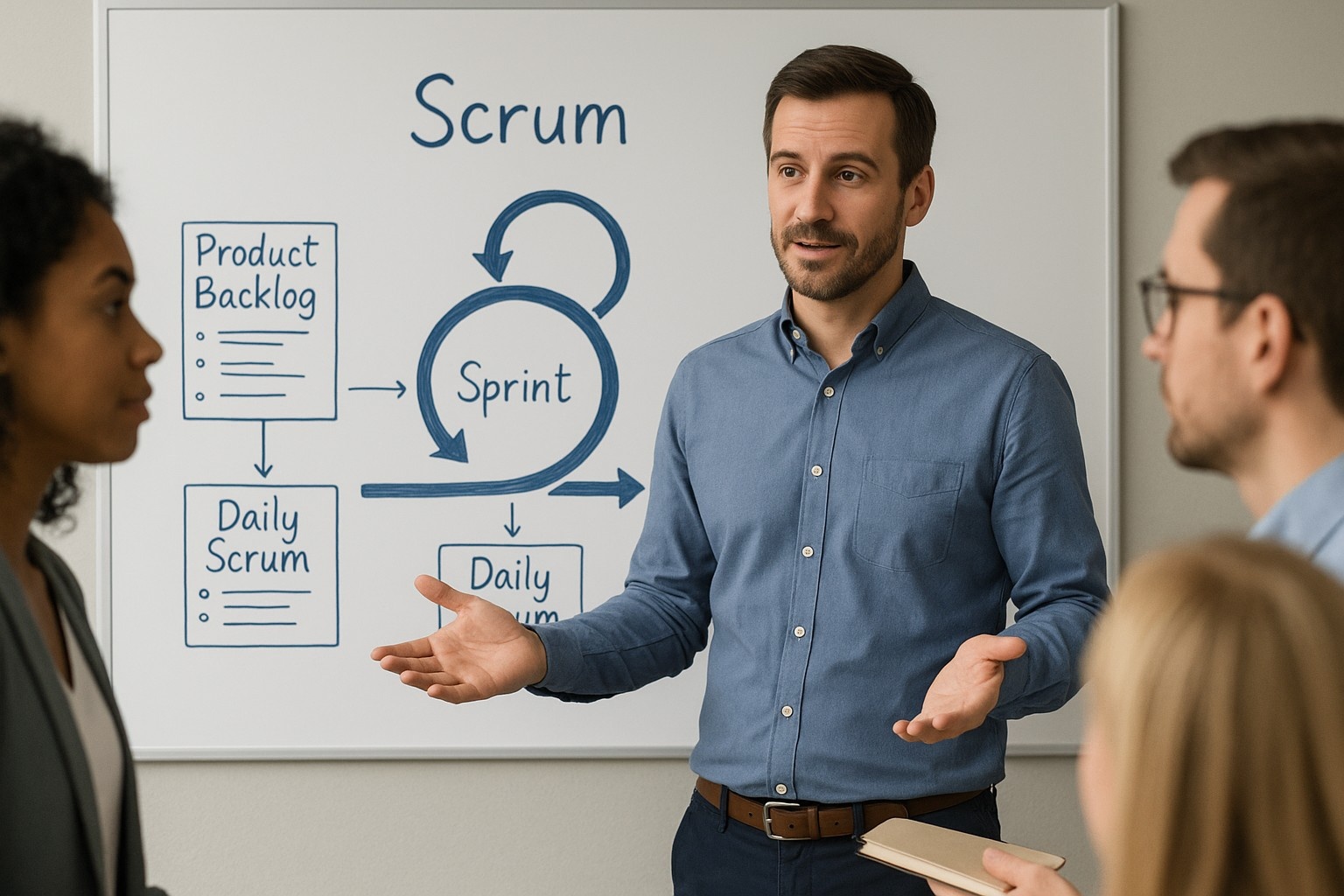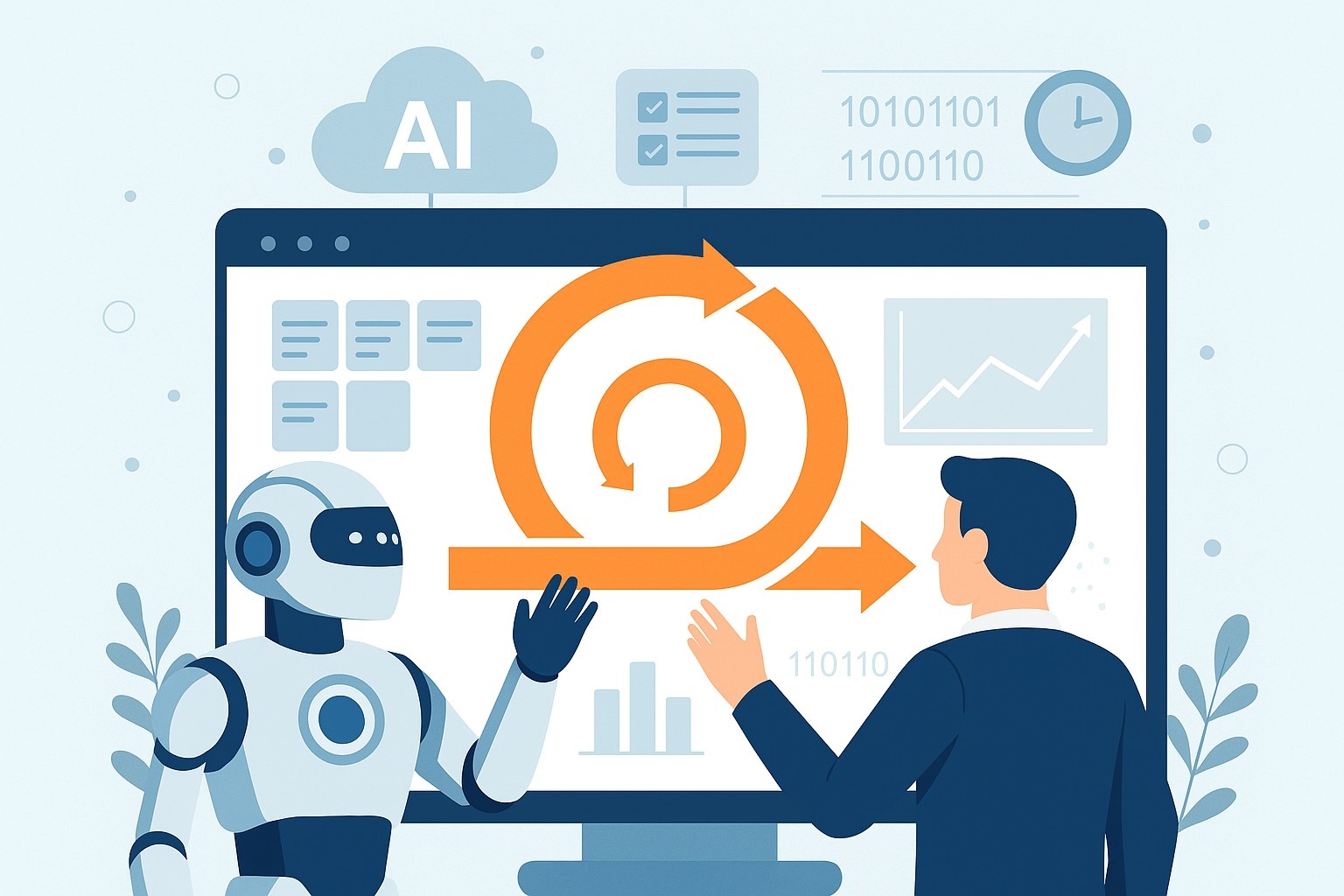Scrum and Scaled Agile Framework (SAFe) are two of the most popular agile frameworks that organizations use worldwide. In this article, we will explore the similarities and differences between Scrum and SAFe as frameworks and as certifications.
What is Scrum?
Scrum is a lightweight framework that provides a structured approach to product development. It emphasizes teamwork, collaboration, and continuous improvement.
Scrum is based on the principles of transparency, inspection, and adaptation. It is designed to enable teams to deliver high-quality products in a timely and efficient manner.
Learn about the roles and responsibilities of a Scrum Master.
What is SAFe Agile?
SAFe, or Scaled Agile Framework, is an agile methodology that is designed for larger organizations that require a more comprehensive approach to product development.
SAFe is based on Lean and Agile principles and is designed to enable organizations to deliver high-quality products in a more efficient and effective manner.
SAFe has four levels: Team, Program, Large Solution, and Portfolio. Each level has its own set of roles, ceremonies, and artifacts.
- Team level: SAFe is very similar to Scrum, with roles such as Product Owner, Scrum Master, and Development Team.
- Program level: SAFe introduces the role of the Release Train Engineer, who is responsible for coordinating the work of multiple teams.
- Large Solution level: SAFe introduces the Solution Train, which is responsible for delivering large, complex solutions.
- Portfolio level: SAFe introduces the Portfolio level, which is responsible for managing the organization’s portfolio of products and solutions.
The choice between Scrum and SAFe depends on the size and complexity of the organization, the nature of the projects, and the level of maturity in agile adoption. Scrum is a good fit for small to medium-sized teams working on a single project at a time, while SAFe is suitable for larger organizations with multiple teams working on complex projects.
Both frameworks have their own strengths and weaknesses, and the decision to choose one over the other should be based on a careful assessment of the organization’s needs and goals.
What are the Differences between Scrum and SAFe?
SAFe (Scaled Agile Framework) and Scrum are both Agile methodologies used to manage software development projects. However, there are some key differences between the two frameworks.
- Scale: Scrum is designed for small to medium-sized teams of 3-9 members, while SAFe is designed to be applied to large enterprises with hundreds or even thousands of team members. SAFe provides a framework for scaling Agile practices across multiple teams and departments within an organization.
- Roles: Scrum has three main roles – the Scrum Master, Product Owner, and Development Team. SAFe has a more complex set of roles, including Product Manager, Release Train Engineer, Solution Architect, and Business Owner, among others. These roles are designed to help manage the complexity of large-scale Agile projects.
- Planning: Scrum uses sprint planning, daily stand-ups, and sprint reviews to manage the development process. SAFe uses a more complex planning structure, including program increment planning, release planning, and iteration planning, among others. These planning activities are designed to help manage the complexity of large-scale Agile projects.
- Timeframes: Scrum sprints are typically 1-4 weeks in duration, while SAFe program increments are typically 8-12 weeks in duration. The longer timeframe in SAFe is designed to allow for more comprehensive planning and coordination across multiple teams.
- Artifacts: Scrum has three main artifacts – the product backlog, sprint backlog, and increment. SAFe has a more complex set of artifacts, including the program backlog, the solution backlog, and the portfolio backlog, among others. These artifacts are designed to help manage the complexity of large-scale Agile projects.
Read more about the best Scrum certifications.
What are the Similarities between Scrum and SAFe?
Despite the differences, Scrum and SAFe share some commonalities.
Both frameworks:
- are based on Agile principles;
- use an iterative and incremental approach to product development;
- focus on delivering high-quality products in a timely and efficient manner;
- emphasize the importance of collaboration and teamwork.
Differences between Scrum Certification and SAFe Certification
SAFe and Scrum both have certification programs that validate the knowledge and skills of practitioners in each framework. However, the SAFe certification program and the Scrum certification program have some key differences.
- Focus: The SAFe certification program is focused on scaling Agile practices across large organizations, while the Scrum certification program is focused on managing small to medium-sized Agile projects.
- Certification levels: The SAFe certification program has four levels of certification – SAFe Agilist (SA), SAFe Practitioner (SP), SAFe Program Consultant (SPC), and SAFe Enterprise Architect (SEA). The Scrum certification program has two main levels – the Certified ScrumMaster (CSM) and the Certified Scrum Product Owner (CSPO) – as well as several other specialized certifications, such as the Certified Scrum Developer (CSD) and the Certified Scrum@Scale Practitioner.
- Certification requirements: The requirements for obtaining a SAFe certification are more stringent and involve more extensive training than the requirements for obtaining a Scrum certification. For SAFe agile certification, it is considered ideal to have prior Scrum experience with expertise in the software industry.
- Coverage: The SAFe certification program covers a broader range of topics than the Scrum certification program. In addition to Agile and Scrum principles, SAFe certification covers topics such as Lean thinking, DevOps, and portfolio management, among others. Scrum certification, on the other hand, focuses mainly on the Scrum framework and its applications.
- Cost: SAFe certification is generally more expensive than Scrum certification. The cost of SAFe training and certification ranges from $1,000 onwards for SAFe Scrum Master certification to over $10,000 for more advanced certifications. Scrum certification, on the other hand, is generally less expensive, with the cost of CSM or CSPO certification ranging from $400 to $1,000.
Read more about the cost of Scrum certifications.
Scrum vs. SAFe: Which Certification To Choose?
The SAFe certification program is more focused on scaling Agile practices across large organizations and covers a broader range of topics than the Scrum certification program, but it also involves more extensive training and is generally more expensive. The Scrum certification program, on the other hand, is more focused on the Scrum framework and its applications and is generally less expensive and easier to obtain.
Scrum certification can help individuals to improve their knowledge of Agile methodologies, understand Scrum ceremonies and artifacts, and apply Scrum practices to their projects.
Scrum certification is suitable for individuals who want to gain a deeper understanding of the Scrum framework and its principles. This can include project managers, product owners, Scrum masters, developers, testers, and other team members who are involved in Agile projects.
On the other hand, SAFe (Scaled Agile Framework) certification is more suitable for organizations that want to implement Agile practices at scale. SAFe is designed to help organizations coordinate and align multiple Agile teams working on large, complex projects.
SAFe certification is ideal for executives, managers, and leaders who are responsible for driving Agile transformations in their organizations. It can also be valuable for Agile coaches and consultants who work with organizations to implement SAFe.
UC Agile provides world-class CSM and CSPO certification training. Find our upcoming courses.



